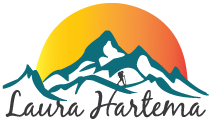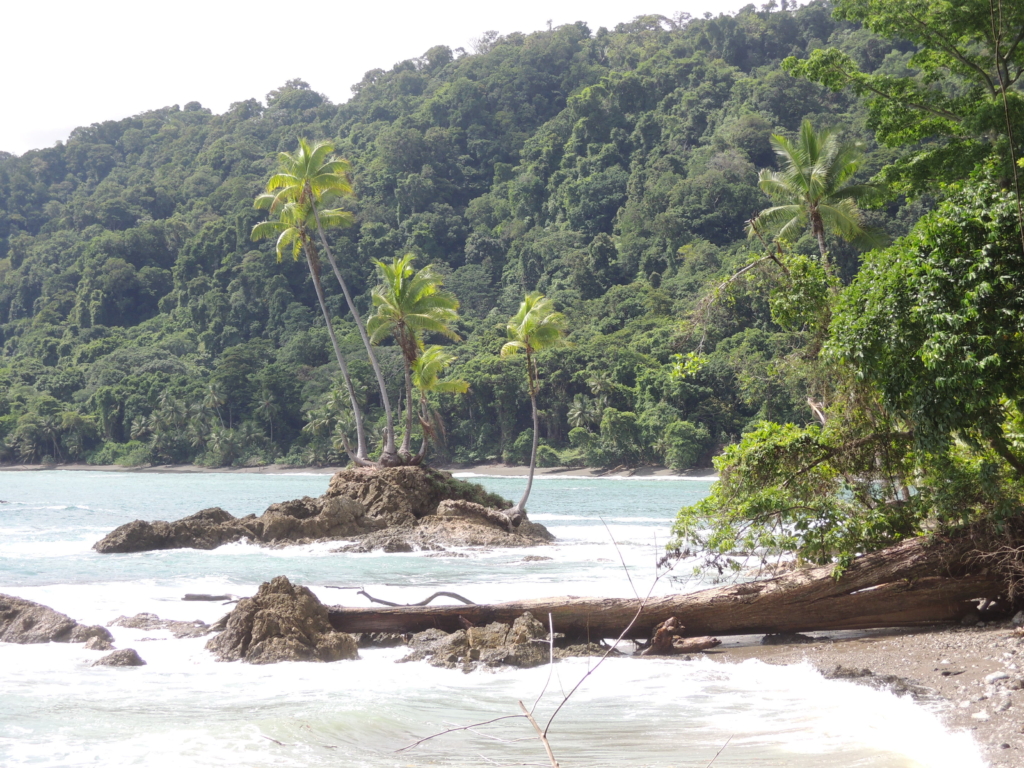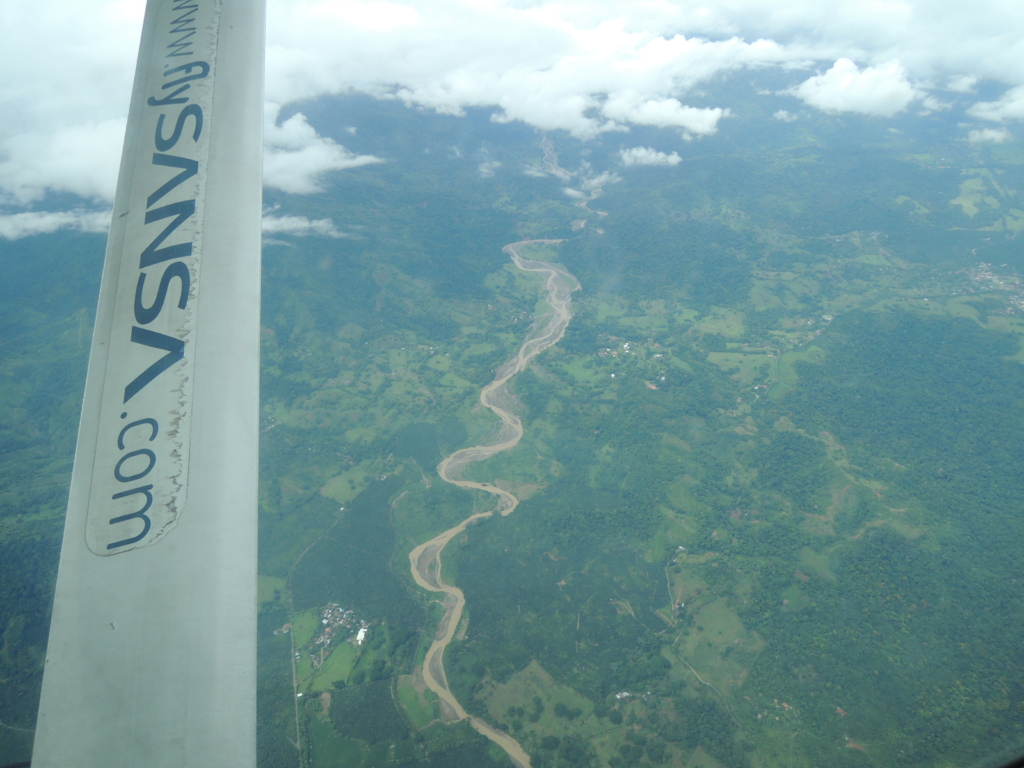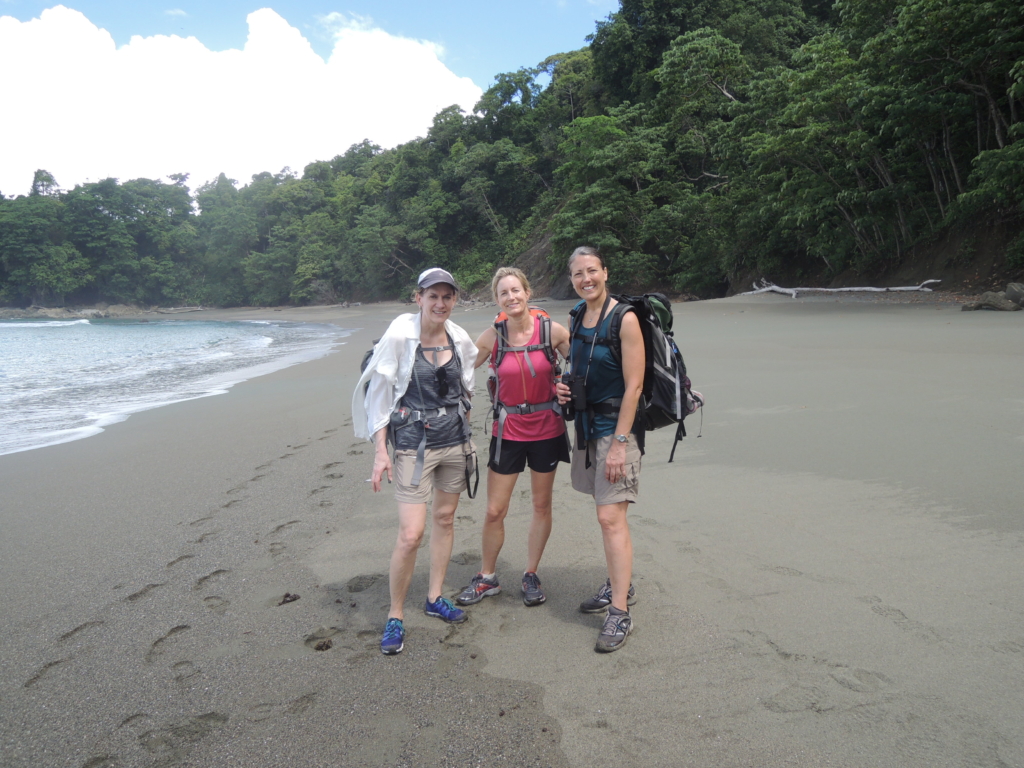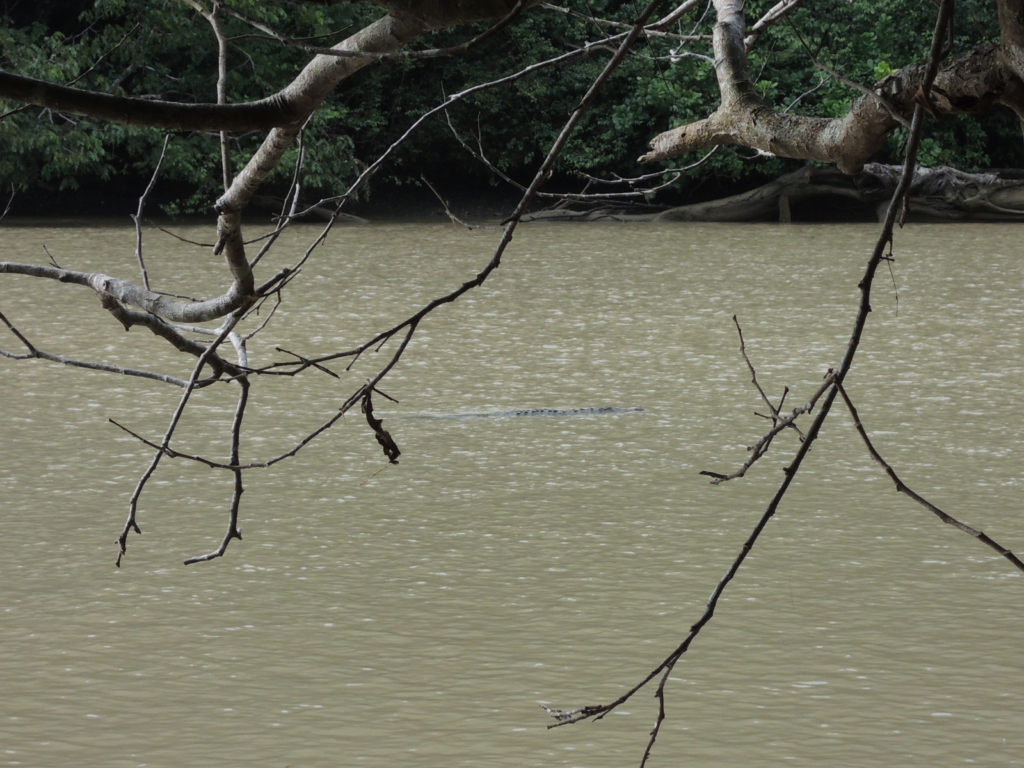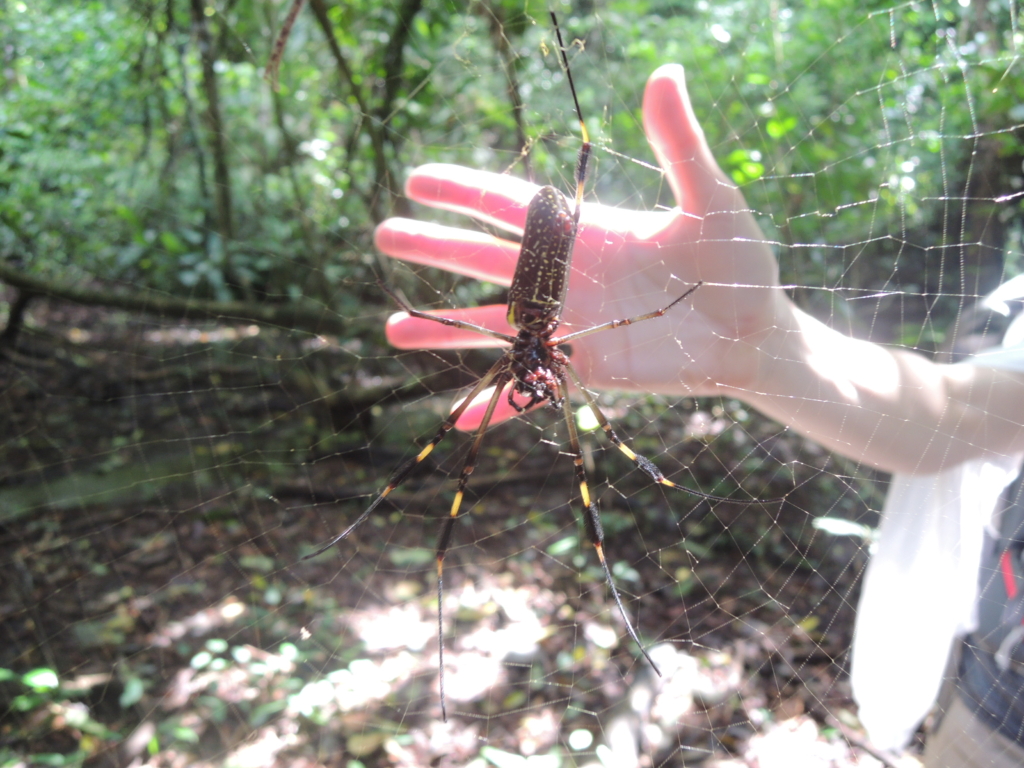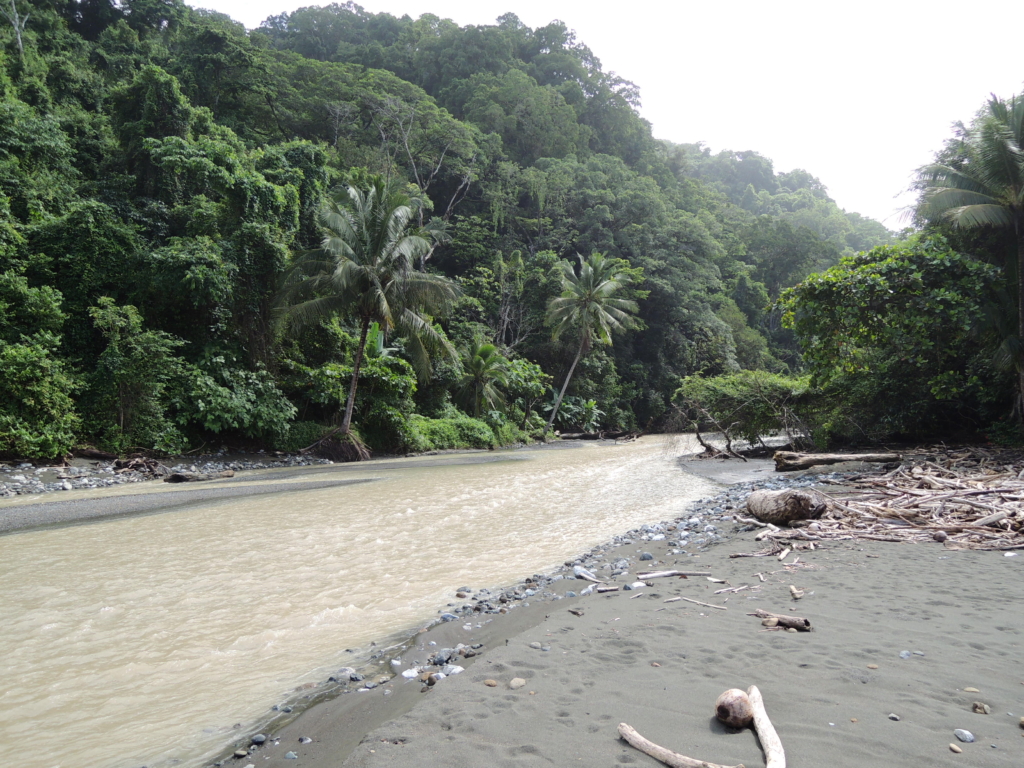We’re born with only two fears: the fear of falling and loud noises. All other fears are learned. What makes us fear that which others embrace? Come along on my Costa Rican rainforest adventure to learn a lesson on fear.
“Pura vida!” they say in Costa Rica. It means: It’s cool. Cheers. Hang loose. I get you. Hello/goodbye. Everylittlethingisgonnabealright. It’s equivalent to my personal mantra, “Love this day.”
Heading to Sansa Air for our one hour flight aboard a 12-seater to Puerto Jimenez, the taxi driver flips his curls to the side to reveal the exclamation points in his eyes of the rear-view mirror. “I would never fly there,” he says. “People die all the time in those planes! It’s the weather in the mountains. Very windy. And rain? Whoo! You should drive the 10 hours instead.”
My two gal pals in the back have no idea of my onset of fear upwelling in my chest. I start paging through past episodes of “Survivor.” Am I wearing the right clothes for this? Did I pack enough food in my carry-on to sustain myself in a jungle crash? I’m no wimp. I’ve gone skydiving three times, but I’d planned on jumping out of the plane.
We’d been notified of an early departure so we could “make another stop.” Oh, good, we get to take off and land twice.
The pilot and copilot are steering and shuffling and reading papers between their laps and the dashboard. The flight plan? The maintenance inspection report?
We pierce the clouds and out funnels the rain. My two friends melt into their seats, gripping their seats and staring out the window. Perhaps they’re looking for the nearest exit route if we crash, or are panning above the clouds for the real heaven?
As we cut around mountains into the valley I see the landing strip. Suddenly, as we swoop in over palm trees, the automated voice alerts us, “Five-hundred feet! Terrain! Terrain! Pull up! Pull UP!”
We may make it. Or not.
With tipped wings, we land. And we do it again as we slide into home plate on yet another runway which ends–next to a cemetery. Umpires says, “Sssafe!” We look at each other. “Pura vida!”
My fear? Done. Check!
While researching the trip I learned something about human nature: We focus on what we fear. Mine? A turbulent plane ride and jungle crash. Next, it’s mi amiga Stef’s fear: crocodiles.
“I don’t want to see one!” she says after reading about their potential presence, along with bull sharks, at high tide in the rivers we would cross. But we’ll cross that fear if and when we get to it. Or will we?
Under the lead of our knowledgeable guide, Mike, who I nicknamed, “El Pájaro” (the bird) because he hardly drank or ate the entire day. We hiked (sauntered) 10 tropical hours with our backpacks through Corcovado National Park, a beachy paradise where tropical rainforest meets the Pacific Ocean.
We thought we’d seen it all: four species of monkeys, Scarlet macaws and other birds, bats, snakes, anteaters, poisonous frogs, wild hogs called peccaries, guinea pig looking agouti, long tailed coati and all sorts of ginormous insects.
We finally arrive to the final river crossing, about 30 mins from camp, and immediately notice two things: 1) El “Rio Claro” no esta claro (clear); and 2) It’s wider than we expected (~80+ ft), and we have no idea of its depth.
As our guide walks downstream to look for the best crossing, I notice a floating log. No, it’s moving upstream against the outgoing tide.
“Um—ladies—that is a crocodile right where we are supposed to cross!”
Stef freaks, “Mike! This is what I’ve been talking about! I’m not crossing this river with a *blankety-blank* crocodile in it!”
My other friend shakes her head, “Me neither!”
I’m ruffled. My adrenaline is surging. I also know our only option is to pull up our sweat-soaked girl pants and cross. We are a half hour away from camp or a six-plus hour if we mega-hustled back to where we started.
El Pájaro grabs his might thin rod of bamboo and inches into El Rio “no-esta-claro.” Will he part it like the red sea?
“Oh, look at that croc,” Mike says. “He’s so macho putting up his tail at us. We have no worries. He is afraid of us.”
“Mike, the croc has more teeth than us, so we are outnumbered. Get back here. I don’t want to see you get chomped.” We trust Mike, who’s been a naturalist in Costa Rica for over 25 years, but I also know American crocodiles have all those teeth and powerful jaws and are underwater acrobats. I’m sure Mike looks tasty to him in his Scottish camo pants and his knock-off “croc” shoes.
It’s time for me to harness my own macho. “Okay, gals, we can do this. We are crossing. Let’s do this.”
Stef grabs a stick. I say, “Mike, get out that machete cuz you’re going to off the head if the croc attacks.”
We group together, me and Mike in the front and the gals tight behind us. Stef’s eyes widen. I grab her hand to keep her from turning back.
Half way across and half way up our legs in muddy water, we lose sight of the croc, presumed to be upstream. I say, “Okay, Mike, más rápido. Let’s pick up the pace here, buddy. Then I scan the river, look at my friends, and yell, “Every man for himself!” I grab Stef’s hand tight, and like a Jesus Lizard walking on water, I hauled us out of that river onto the bank. I look behind to see Mike and my other friend 25-feet behind in my wake. At shore, Mike says, “What good timing. What a fabulous experience. We weren’t in any danger. We look really tall to him. He was only about seven feet long.”
“Double it,” I say.
“It was 14 feet long,” Steph says. “At least.”
Stef, looking relieved with a twisted smile, pumps her arms and fists, “I did not like that.”
“Actually, I think you did,” I say. “You faced your fears. It will be the best story of our whole trip. Now what are we going to be afraid of?”
“Jungle cats and spiders.” We all laugh. Mike confesses he is not fond of giant millipedes. My other friend fears grubs and maggots…and vines that look like snakes.
We spent a week in the rainforest learning about the behaviors and adaptations of the plants and wildlife, the geology, cultural history, and each other.
At the end of our trip, tucked again into the 12-seater plane, we hovered through the clouds above the Pacific Ocean and the rainforest. This time, I didn’t fear crashing, and if we did, the world beneath me didn’t seem so scary. I understood much about the rainforest now—the behavior and habitat of wildlife; that plentiful figs, coconuts and bananas would feed me; that the fresh water percolating from the rocks would sustain me.
Do you fear new experiences? Or people and cultures different from yourself? Or taking a small step into the unknown?
How do we unlearn our (often) illogical fears? If we dig deeper into understanding our “jungle creatures” we will fear less and maybe even embrace them. Ride that plane; cross that muddy river!
Love This Day. Pura vida!
Please read my memoir, BERING SEA STRONG, to see what it was like to spend three months as the only woman and scientist aboard a commercial fishing vessel on Alaska’s high seas.
